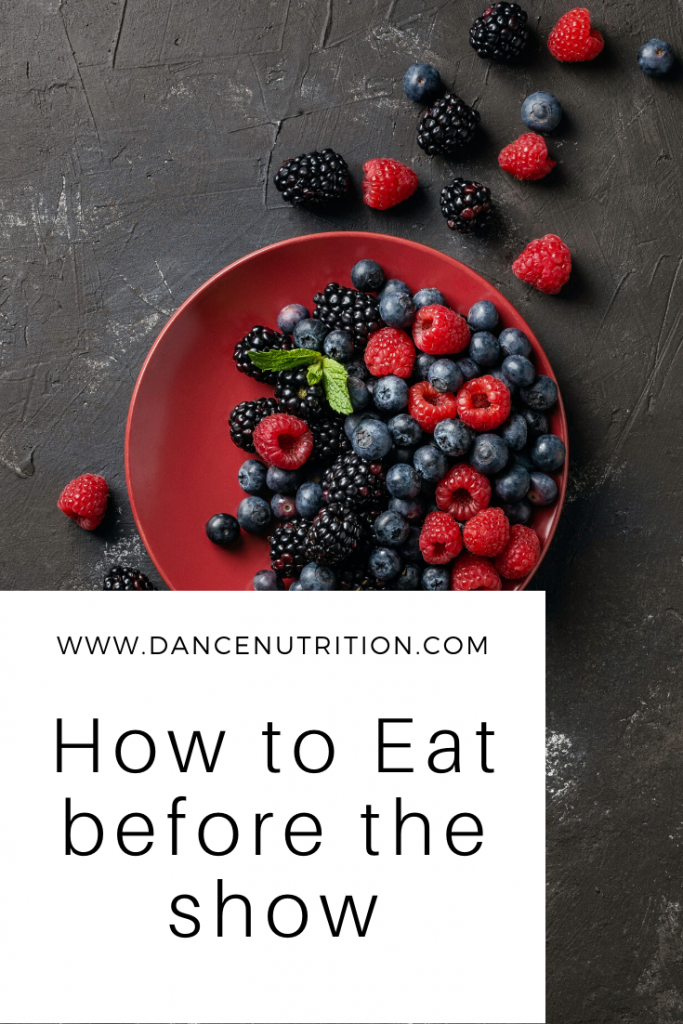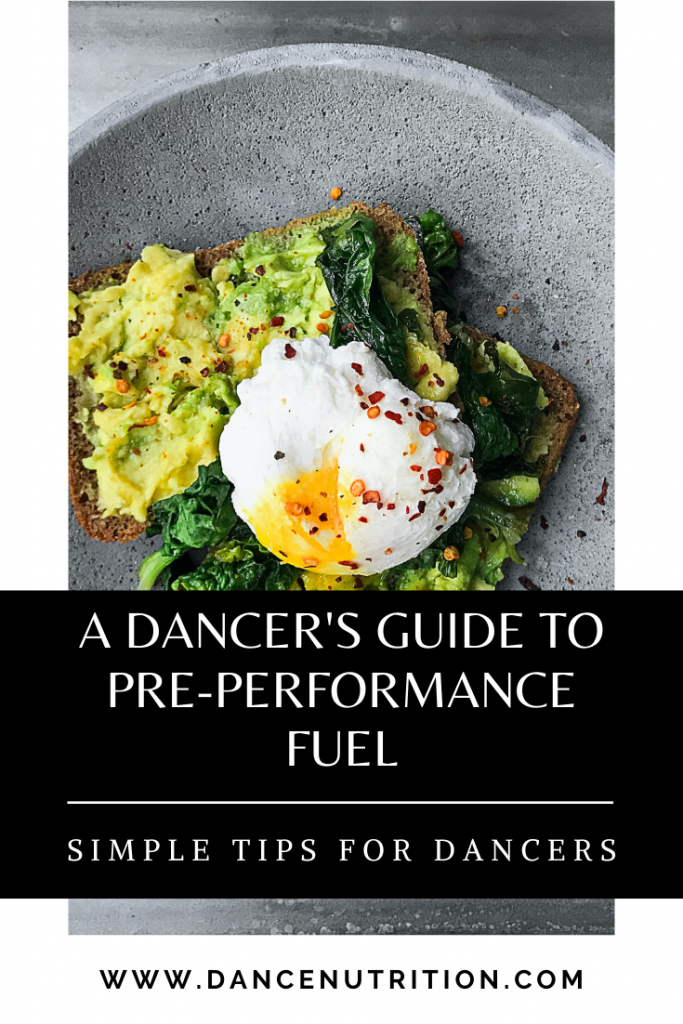As a dancer, I stress the importance of taking a step back to fully enjoy meals as a mindful experience. However, we all know that busy days can quickly fill with rehearsals and performances. In these high-demand moments, meal planning becomes a dancer’s best friend. Because intense schedules can dull our hunger cues, having a solid plan for meals and snacks is crucial to prevent energy dips and hunger surges later in the day.
So, how can dancers effectively plan their nutrition around rehearsals and performances? Let’s dive into how you can build a pre-performance fuel plan that supports your specific needs. We’ll cover:
- How to eat in the days leading up to a show.
- Meal and snack strategies for the day of performance.
- How to optimize your food choices to boost energy and endurance.
- Key foods to include in the hours leading up to a performance.
What to Eat in the Days Before Your Performance
The days leading up to your performance are the perfect opportunity to build balanced meals that fuel your body consistently. Here are some key tips for creating a fuel plan that supports your energy levels:
#1: Start With Breakfast
Aim to eat breakfast within an hour of waking. Instead of focusing on meal size, concentrate on including all three macronutrients— carbs, protein, and fats— for a well-rounded meal. One of my go-to options is toasted sourdough with mashed avocado and eggs.
#2: Pack Snacks
Non-perishable options are a lifesaver for busy rehearsals. Keep things simple: bars, crackers, and trail mix are all excellent options. Don’t shy away from packaged foods— these can be easily digested and give you the quick energy you need during long rehearsal days.
#3: Prioritize Post-Class Recovery
After a training session or performance, don’t neglect your recovery window. A balanced post-dance meal, combining carbs, protein, and fats, is key. Carbohydrates stimulate the release of insulin, a hormone that promotes the absorption of glycogen-replenishing sugars and muscle-building protein. Focus on a mix of both carb- and protein-rich additions. Here’s an article that dives deeper into performance recovery nutrition for dancers.
What to Eat 3-4 Hours Before Dancing
With a few hours to digest, this is an ideal window to eat a substantial meal that supports sustained energy. Now’s the time to prioritize fibrous complex carbohydrates. Sources like like whole grains, whole grain bread and cereal, legumes, and starchy vegetables like potatoes and squash. These foods are broken down slowly, providing sustained energy during your performance.
If your rehearsal or performance is in the afternoon, opt for a lunch with a grain like quinoa or wild rice, paired with a protein like fish, chicken, or tofu. If your day starts early, focus on a breakfast that combines slow-cooked oats, bananas, and nut or seed butter, or go for eggs with avocado on whole-grain toast. Including a fat source, such as avocado, nuts, or seeds, will enhance satisfaction and nutrient absorption.
For early morning workouts or classes, if you’re not a morning eater, don’t worry about eating a large meal in advance. Instead, focus on a snack that is light on the stomach, with easily digestible carbs— think fruit paired with protein-rich options like yogurt, topped with berries and ground flax. The goal is to give your body fuel without stomach upset.
What to Eat 1-2 Hours Before Dancing
As you approach performance time, it’s essential to prioritize carbs and protein, while minimizing fat and fiber. Too much fiber or fat before dancing can lead to gas, discomfort, and stomach upset. Every dancer’s digestion is different, so it’s important to adjust based on your own preferences and sensitivities.
For example, if you’re a dancer who typically eats a high-fiber diet, a small serving of fibrous carbs may not cause any issues. But for dancers with sensitive stomachs or digestive conditions like IBS, it’s best to avoid raw veggies, bran, nuts, or fruits with edible peels before dancing.
The same goes for artificial sweeteners and sugar alcohols. Remember: the goal of your pre-workout meal or snack is to optimize your performance without causing stomach distress. Everyone’s digestive system responds differently, so finding what works for you is key.
What to Eat 30 Minutes or Less Before Dancing
If you often feel hungry, fatigued, or dizzy during class, it’s crucial to have a light, easily digestible snack 30-60 minutes before dancing. A homemade trail mix of dried fruit, nuts, and pretzels is easy to carry and provides a quick energy boost.
Another popular option is smoothies. They’re convenient and packed with nutrients, but make sure to allow time for digestion—at least 30 minutes to an hour before your class. To maximize energy, blend fruit with yogurt and/or protein powder to stabilize blood sugar and prevent crashes.
The same goes for if you need a mid-class energy boost. Quick, easily digestible foods provide a balance of simple carbohydrates for immediate energy and a small amount of protein to sustain performance. Here are a few examples:
- Fruit pouches
- Dried fruit (like apricots or raisins)
- Pretzels
- Granola bars (low in sugar)
- Applesauce cups
- Bananas
Key Takeaways: Pre-Performance Fuel For Dancers
As your dance schedule intensifies, now is not the time to experiment with new diets or extreme food plans. Avoid “quick-fix” diets that could lead to nutrient deficiencies or make you more prone to injury. Through trial and error, you’ll find which foods fuel you best.
Remember, there’s no universal meal plan that works for every dancer. Every body is different, and the goal is to figure out what keeps you feeling energized and performing at your best.
Want to hear how your favorite professional dancers fuel before performances? Subscribe to my YouTube series Conversations with The Pros for expert insights!




